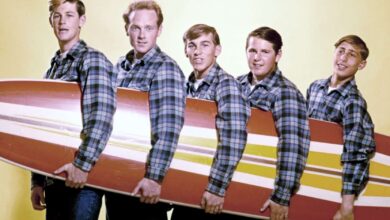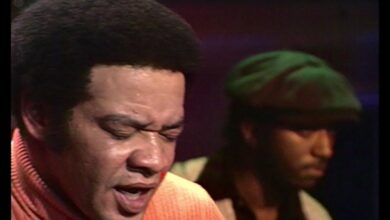Petula Clark’s ‘Downtown’ Becomes a Timeless Classic and Transforms Pop Music in 1964
In late 1964, Petula Clark released Downtown, a song that would not only define her career but also become one of the most enduring anthems of the decade. With its sweeping orchestration, uplifting melody, and evocative lyrics, the track captured the excitement and escapism of city life, resonating with audiences worldwide. It quickly climbed the charts, reaching No. 1 on the Billboard Hot 100 in the United States in early 1965, making Clark the first British female artist to top the American charts during the rock and roll era. The song also became a major hit in the UK and across Europe, solidifying Clark’s status as an international pop sensation.
Before Downtown catapulted her to global fame, Petula Clark had already built a successful career as a child star in Britain. Born in Epsom, Surrey, in 1932, she found early success on radio during World War II, performing for British troops. By the 1950s, she had transitioned into a recording artist, scoring numerous hits in the UK and France. However, by the early ‘60s, her career had somewhat plateaued outside of Europe. It wasn’t until Downtown that she achieved the kind of mainstream, cross-continental stardom that very few British female artists had attained at the time.
The story behind Downtown begins with its composer, Tony Hatch, a rising songwriter and producer who had been working with Clark on several projects. Inspired by a trip to New York City, Hatch was captivated by the vibrant energy of Manhattan and wanted to translate that feeling into music. Originally intending the song for The Drifters, Hatch played an unfinished version for Clark during a studio session in London. Clark, immediately drawn to its soaring melody and theme of escapism, insisted on recording it herself. That decision would change her career forever.
The recording of Downtown took place at Pye Studios in London, with Hatch overseeing production. The arrangement featured a lush orchestral backing, a hallmark of Hatch’s production style, blending classical influences with contemporary pop elements. The use of a full string section, combined with a prominent piano line and a driving rhythm, created a sound that was both grand and infectious. Clark’s vocal delivery was effortlessly charismatic, striking the perfect balance between sophistication and youthful exuberance. The song’s anthemic chorus and uplifting spirit gave it a sense of timeless appeal, setting it apart from many of its contemporaries.
Upon its release, Downtown was met with overwhelming enthusiasm. The song’s infectious melody and universal theme of escaping loneliness through the excitement of city life resonated with listeners. In the UK, it became an immediate hit, reaching No. 2 on the charts. However, its true impact was felt in the United States, where it soared to No. 1 in January 1965. This achievement was groundbreaking, as few British female artists had achieved such massive success in the American market during the early years of the British Invasion, a movement largely dominated by male rock bands.
The impact of Downtown extended beyond its chart success. It marked a shift in pop music, demonstrating that sophisticated, orchestrally driven songs could thrive alongside the raw energy of rock and roll. At a time when The Beatles, The Rolling Stones, and other British bands were defining the sound of the decade, Clark’s success showed that there was still a place for elegant, melodic pop music with a strong vocal performance. The song also helped bridge the gap between the traditional pop of the early ‘60s and the more dynamic, expansive sound that would define the latter half of the decade.
For Petula Clark, Downtown was a turning point. It transformed her from a regional star into a global icon, opening doors to new opportunities, including film roles and high-profile performances. She became a regular on American television, appearing on programs like The Ed Sullivan Show and The Dean Martin Show. The song also led to a string of follow-up hits, including I Know a Place, My Love, and Don’t Sleep in the Subway, all of which continued her success on both sides of the Atlantic.
The song’s influence extended far beyond Clark’s own career. It became an emblem of the era, frequently used in films, television shows, and commercials to evoke the optimism and excitement of the 1960s. Its enduring popularity has led to numerous covers by artists spanning multiple genres, from Dolly Parton’s country-infused rendition to Frank Sinatra’s jazz interpretation. Each version showcased the song’s versatility and timeless charm.
At the time of Downtown’s release, Clark was navigating a major transition in her career. The success of the song allowed her to tour internationally and establish herself as a leading figure in the pop music world. While she had been well known in the UK and France, her newfound stardom in the United States cemented her place in music history. This period also saw her expand into acting, starring in films such as Finian’s Rainbow alongside Fred Astaire.
Decades after its release, Downtown remains one of the most celebrated songs of the 1960s. It has been featured on countless “greatest hits” compilations and continues to receive frequent airplay on classic pop and oldies stations. Its lyrics, which speak of finding solace in the bustling energy of the city, remain relatable to listeners of all generations, ensuring its lasting appeal.
The song also had a lasting impact on the development of pop music. It demonstrated that a well-crafted, sophisticated pop song could be just as impactful as a rock anthem. The production techniques used in Downtown, particularly its orchestral arrangement, influenced future generations of producers and songwriters who sought to merge classical elements with mainstream pop.
Over the years, Downtown has received numerous accolades, including a Grammy Award for Best Rock & Roll Recording in 1965. Petula Clark’s legacy as one of the defining voices of the British Invasion was solidified, and she remains one of the most successful British female artists in history. Even in the later years of her career, Clark continued to perform the song in concerts, each rendition a testament to its enduring magic.
Ultimately, Downtown is more than just a song—it’s an anthem of escapism, an ode to the vibrancy of city life, and a landmark achievement in pop music history. For Petula Clark, it was the song that redefined her career, proving that music with elegance and sophistication could hold its own in the rapidly evolving landscape of the 1960s. Today, it remains a cherished classic, a reminder of an era when melody, storytelling, and timeless charm came together in perfect harmony.



